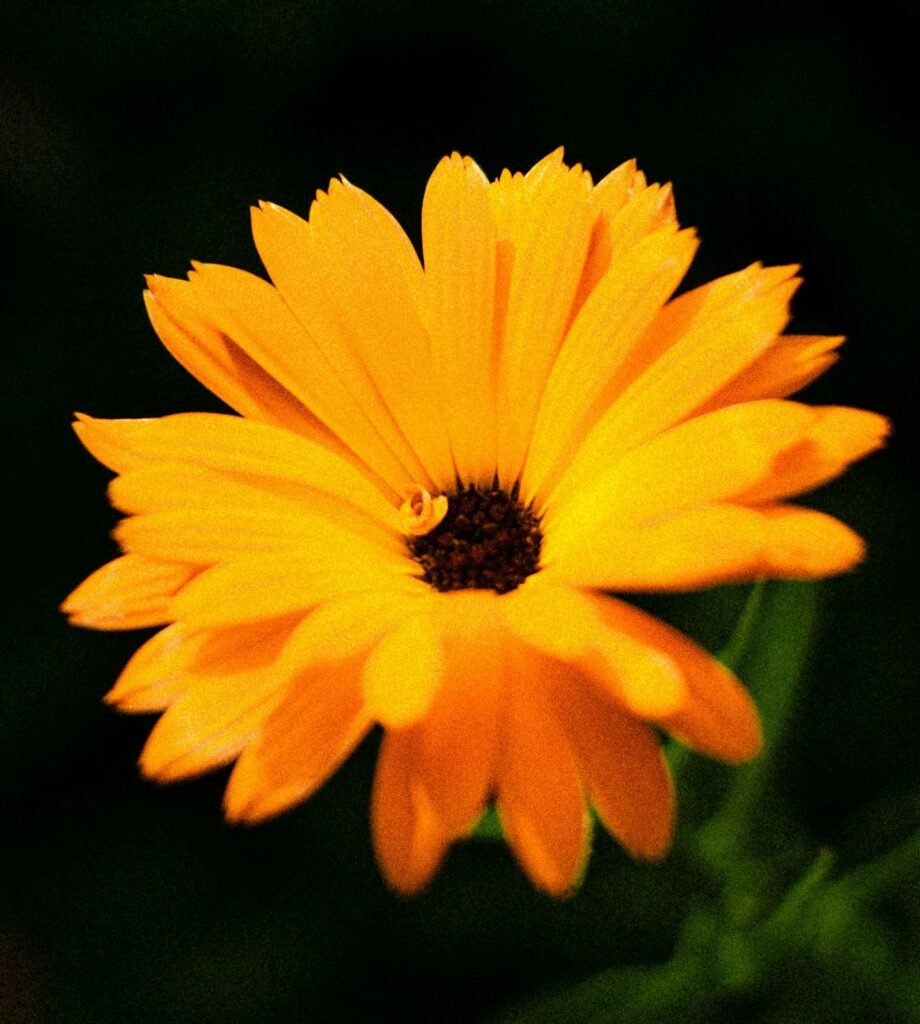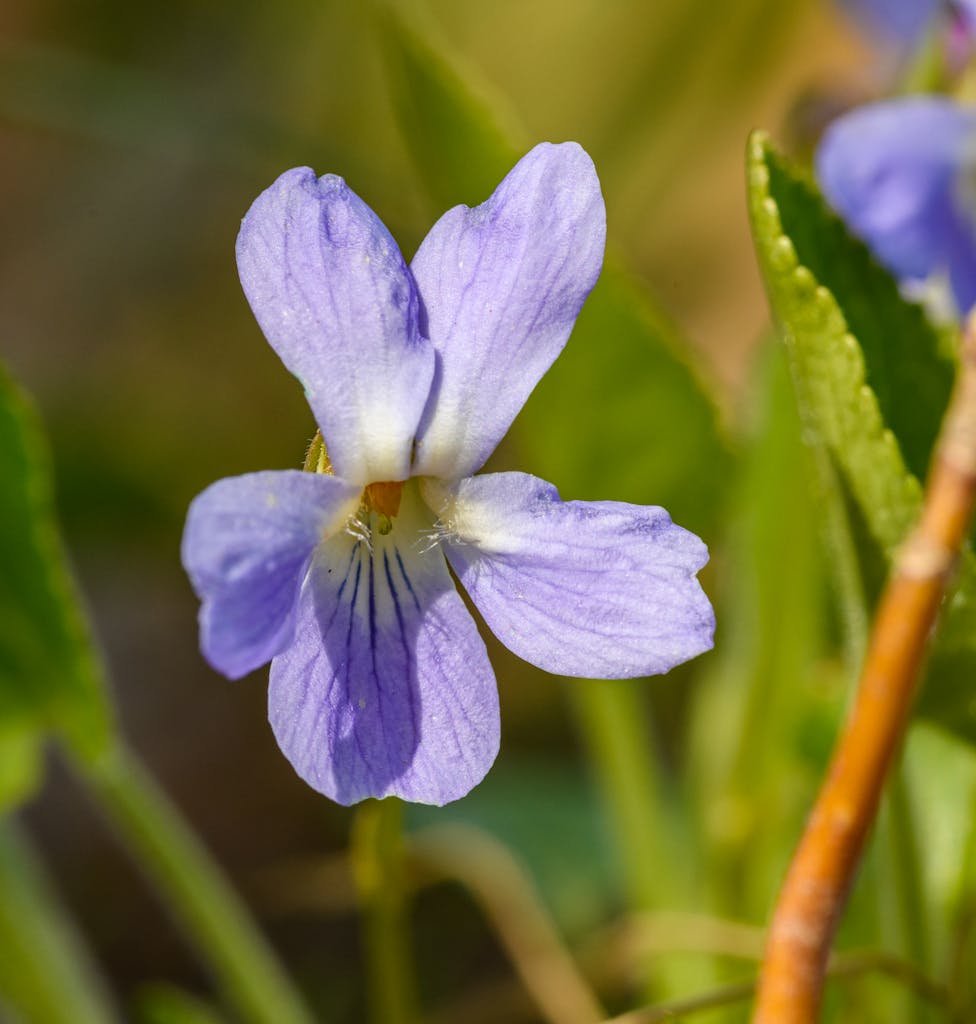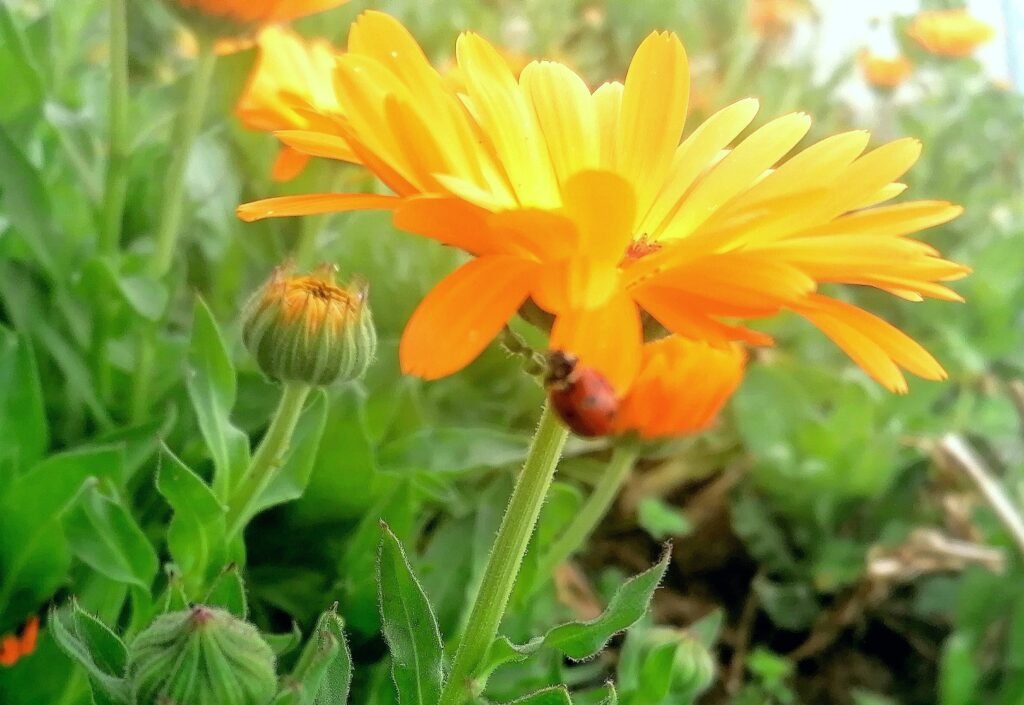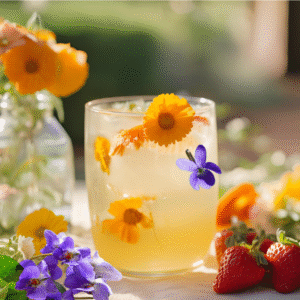


There’s something quietly magical about violets. You could walk right past a ditch full of them and never notice. I did, just the other day. It wasn’t until I started thinking about this Garden and Hedgerow Lemonade that I finally saw them. All at once, they were everywhere. Tiny violet faces peeking through the grass. Shy and soft, they ask nothing from you—just your attention.
Calendula, on the other hand, is impossible to ignore. Bold, golden, and glowing like little suns, it shows up with flair. It’s the kind of flower that waves you down from across the garden. Cheerful, boisterous, and always ready to help.
This lemonade is a meeting of opposites. One flower you have to seek, and one that finds you. Strawberries bring sweetness, violets bring calm, and calendula brings light. Together, they create a drink that feels like stepping into spring barefoot—alive, vibrant, and just a little enchanted.
But it’s more than beautiful. Violets support the lymphatic and respiratory systems. Calendula is known for its skin-loving, anti-inflammatory power. Strawberries carry a bright dose of antioxidants. Every sip is a little seasonal tonic.
So if you’ve been craving something soft, sunny, and quietly nourishing—this is it. A floral lemonade kissed by the hedgerow and garden alike. Simple, herbal, and a little wild.
Let’s go find the violets hiding underfoot and the calendula shining from the beds. Then we’ll make something truly magical.
All About Violets: How to Identify, Forage, and Enjoy Their Benefits
How to Recognize Wild Violets
At first glance, violets might seem shy — tiny blooms tucked among grasses and under shrubs. Yet once you know what to look for, you’ll start spotting them everywhere! Wild violets typically have heart-shaped leaves with a slight ruffle. The delicate five-petaled flowers that can range from deep purple to soft lavender, and sometimes even white. They tend to grow in charming little clusters, forming soft carpets where the ground is moist and welcoming.
So next time you’re wandering through your garden or along a woodland path, keep an eye low. Nature’s little treasures are often hiding right at your feet!
Where to Find Violets in the Wild
Wild violets love the quiet places — think shady gardens, the dappled edges of woodlands, and even forgotten corners of old lawns. They thrive in rich, slightly damp soil and often pop up in places where the world feels just a little more alive. Early spring is their moment to shine, though in cooler climates they might linger well into summer. As always, it’s a good idea to check your local foraging guides to confirm what varieties are common (and safe) in your area.
Foraging Tips: Sustainability and Safety First
While it’s tempting to gather armfuls of these pretty blooms, sustainable foraging is key. Always harvest sparingly, taking only a few flowers from each patch to allow the plants to continue thriving. Make sure the area hasn’t been sprayed with pesticides or other chemicals — roadsides, public parks, and heavily manicured lawns are best avoided. And of course, only pick where you have permission, respecting private land and protected spaces.
Ethical foraging isn’t just good manners — it’s how we keep the magic alive for generations to come.
My Seasonal Foraging Basket Includes:
Gardening gloves – for picking calendula without sticky fingers
Harvesting scissors – gentle on delicate blooms
Canvas foraging pouch – perfect for hedgerow strolls
Health Benefits of Violets
Violets aren’t just pretty faces; they carry a treasure trove of gentle healing powers. Traditionally, they’ve been used to support the respiratory system — easing coughs, soothing sore throats, and promoting clear breathing. They’re also wonderful allies for the lymphatic system, helping the body move fluids and clear waste naturally. Some herbalists even recommend violets for mild detoxes, thanks to their subtle cleansing properties. Plus, their tender petals are full of vitamin C and antioxidants — just one more reason to invite them into your kitchen!
A Touch of Folklore: Violets in Tradition
Long before trendy herbalism made a comeback, violets had a place in old remedies and everyday magic. In folklore, violets symbolized modesty, renewal, and quiet strength — a fitting reputation for such a small but mighty bloom. They were brewed into soothing syrups, infused into springtime tonics, and even woven into love charms and memory aids.
Isn’t it wonderful to think that with each violet we gather, we’re joining a tradition that stretches back hundreds of years?
Calendula: Sunshine in a Flower and a Garden’s Best Friend
A Quick Introduction to Calendula (Calendula officinalis vs. Marigolds)
If there’s one flower that feels like pure sunshine bottled up in petals, it’s calendula. Often called “pot marigold,” Calendula officinalis is not the same as your typical garden marigold (Tagetes). Though their cheery golden blooms might fool you at first glance, true calendula is softer, more herbal, and absolutely bursting with healing potential. So, when you’re picking seeds or seedlings, it’s worth double-checking you’re getting the right sunny friend for your garden and kitchen!
Why Calendula is Loved for Health
Calendula’s reputation as a gentle healer stretches back centuries — and for good reason. It’s naturally anti-inflammatory, making it a favorite for soothing irritated skin, calming minor cuts, and speeding up healing. It also lends a hand to the immune system, thanks to its high content of flavonoids and antioxidants. Whether infused into oils, brewed into teas, or sprinkled fresh into salads, calendula brings a little healing magic to everything it touches.
A Simple Guide to Growing Calendula at Home
One of the most delightful things about calendula is just how easy it is to grow. Start by sowing seeds directly outdoors in early spring — as soon as the frost lifts and the soil feels workable under your fingers. Calendula isn’t too fussy, but it does love a sunny spot and well-drained soil. Keep the plants regularly deadheaded (snipping off spent flowers) and they’ll reward you with blooms from early summer right through to the first frost. When harvesting, simply pluck the full flower heads and dry them gently to preserve their goodness for year-round use.
How Calendula Benefits Your Garden
But calendula isn’t just a treat for you — it’s a hardworking friend to your entire garden! Its bright flowers are a magnet for pollinators like bees and butterflies, bringing a healthy buzz to your beds. At the same time, calendula’s strong scent helps to gently repel certain pests, making it an excellent companion plant alongside vegetables and herbs. And if that weren’t enough, the deep roots of calendula help to break up compacted soil, quietly improving the earth for whatever comes next.
Truly, it’s a little patch of sunshine with a long list of hidden talents.
✨ ➔ (P.S. If you want to dive even deeper into this golden wonder, be sure to check out my full Calendula Growing and Benefits Guide!)



Why Violet, Calendula & Strawberry Make the Perfect Lemonade Trio
When spring finally arrives, the world feels softer, brighter, and full of promise. It’s the perfect time to gather nature’s early gifts and blend them into something joyful. Violet, calendula, and strawberry come together not just for flavour, but for healing and heart.
Each one brings its own charm. Together, they create a harmony that feels like drinking spring itself.
A Symphony of Health Benefits
Let’s start with violets. Their soft petals carry gentle floral notes and are known for supporting the respiratory system. They also help the lymphatic system, nudging your body to release what it no longer needs. It’s a quiet, cleansing power — perfect after a long winter.
Then there’s calendula.
Bright, golden, and impossible to ignore, it adds anti-inflammatory support and skin-loving benefits. Calendula is comforting, strengthening, and always feels like a warm hand on your shoulder.
Finally, strawberries. Sweet, juicy, and full of antioxidants, they bring brightness, vitamin C, and immune support to the glass. They tie the whole blend together with their familiar, sun-kissed flavour.
A Blend That’s Both Healing and Joyful
When you combine all three, you get more than just a drink. You create a seasonal tonic — joyful, nourishing, and full of simple beauty. It’s wild hedgerow meets homegrown garden, tradition meets whimsy, herbal medicine meets kitchen play. Best of all, it tastes like sunshine after rain.
And truly? It’s as good for the soul as it is for the body.
Violet, Calendula & Strawberry Lemonade Recipe (Full Guide)

Garden and Hedgerow Lemonade with Violet, Calendula & Strawberry
Ingredients
For the Infusion
- 500 ml water freshly boiled
- 4 tbsp Calendula pedals fresh (2 tbsp if dried)
- 4 tbsp wild Viola pedals fresh (2 tbsp if dried)
- 1 tbsp Hibiscus flower Optional for tartness and color
For the Lemonade base
- 750 ml Water Cold, still or sparkling
- 150 g Strawberries fresh, halved and hulled
- 80 g Lemon juice fresh (about 2 Lemons)
- 2 tbsp Honey, Maple syrup or Agave syrup more or less to taste
Instructions
Make the floral infusion:
- In a heatproof jug, pour 500 ml just-boiled water over the calendula and violet petals (plus hibiscus, if using). Cover and let steep for 15–20 minutes.
Prepare the strawberry base:
- While the flowers steep, mash the strawberries gently in a bowl or pulse briefly in a blender. Strain through a sieve if you prefer a smoother lemonade.
Strain the infusion:
- Once steeped, strain the flower petals using a fine mesh sieve or cheesecloth. Discard or compost the petals.
Combine:
- In a large jug, combine the floral infusion, mashed strawberries, lemon juice, and sweetener. Stir well.
Top up with cold water:
- Add the remaining 750 ml water (still or sparkling). Stir, taste, and adjust sweetness or acidity as needed.
Chill and serve:
- Serve over ice, garnished with fresh flowers or sliced lemon. Best enjoyed the same day.
Notes
Notes & Serving Suggestions
- Color tip: A pinch of hibiscus deepens the pink color naturally.
- Foraged flowers: Ensure flowers are free from pesticides and properly identified.
- Make it a mocktail: Add a splash of elderflower cordial or top with kombucha.
- Garnish ideas: Edible flowers, strawberry slices, or a calendula petal rim.
Wrapping Up: Sip the Season, One Bloom at a Time
And just like that, with a handful of violets, a sprinkle of calendula, and a few sun-kissed strawberries, you’ve captured the very spirit of spring in a glass. There’s something so satisfying about creating with nature. Whether it’s tucked in the garden beds you’ve tended or hidden along the wild edges of the path.
Not only does this Garden and Hedgerow Lemonade taste like a secret shared between you and the earth, but it also offers a gentle boost
. Truly, it’s a little love letter to the season, poured over ice and served with a smile.
Of course, if you’re feeling inspired to dive even deeper into the world of wild and wonderful drinks, don’t stop here! You might also love my Cleaver Lemonade recipe, which is another fresh, green way to toast the season — especially when the hedgerows are at their lushest.
In the end, whether you’re gathering a few petals for yourself or crafting a full jug to share with friends, these simple recipes remind us that abundance is often just a few steps outside our door. So go ahead: sip slowly, savor the colors, and celebrate the small, fleeting magic that springtime brings.
